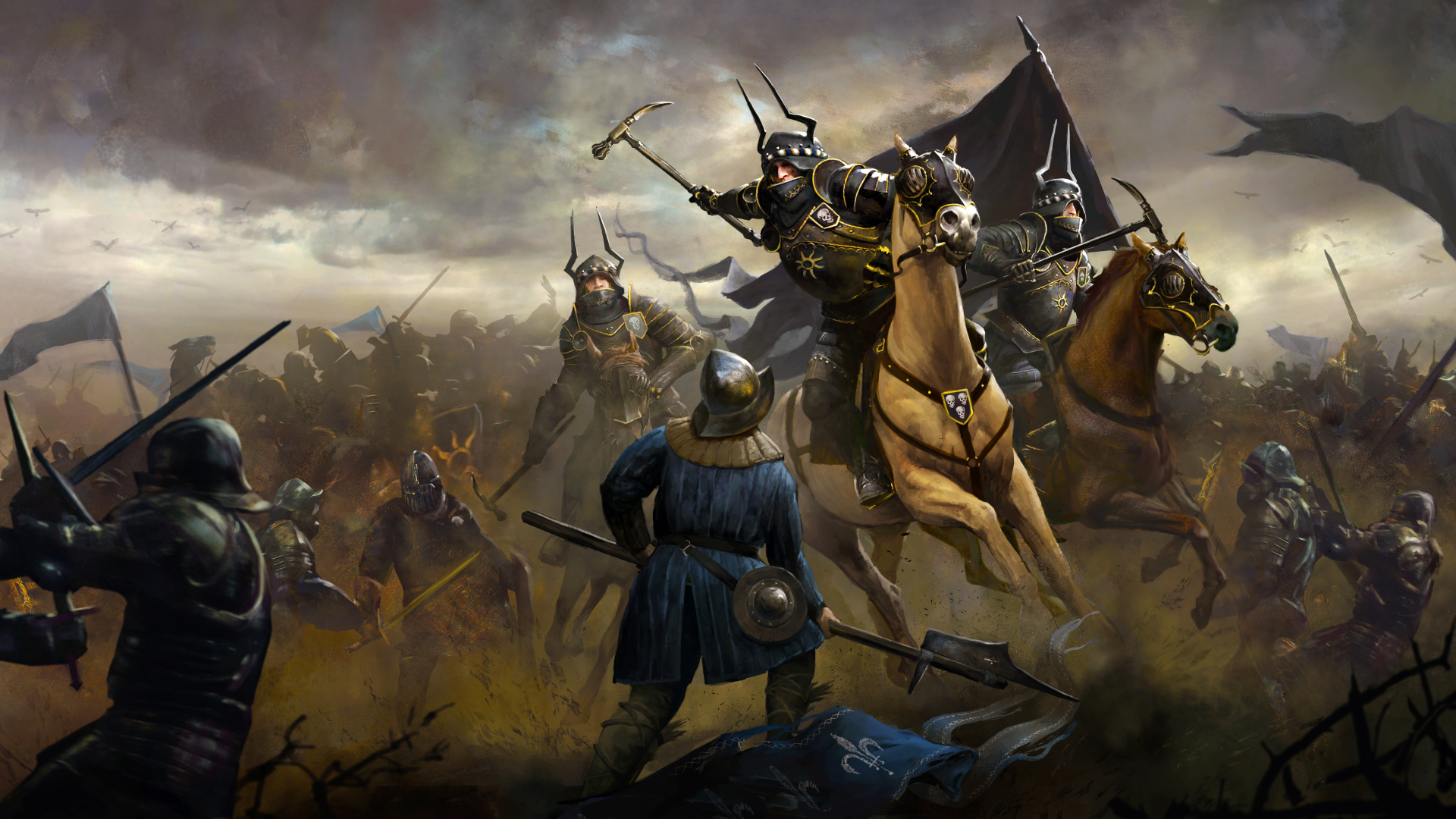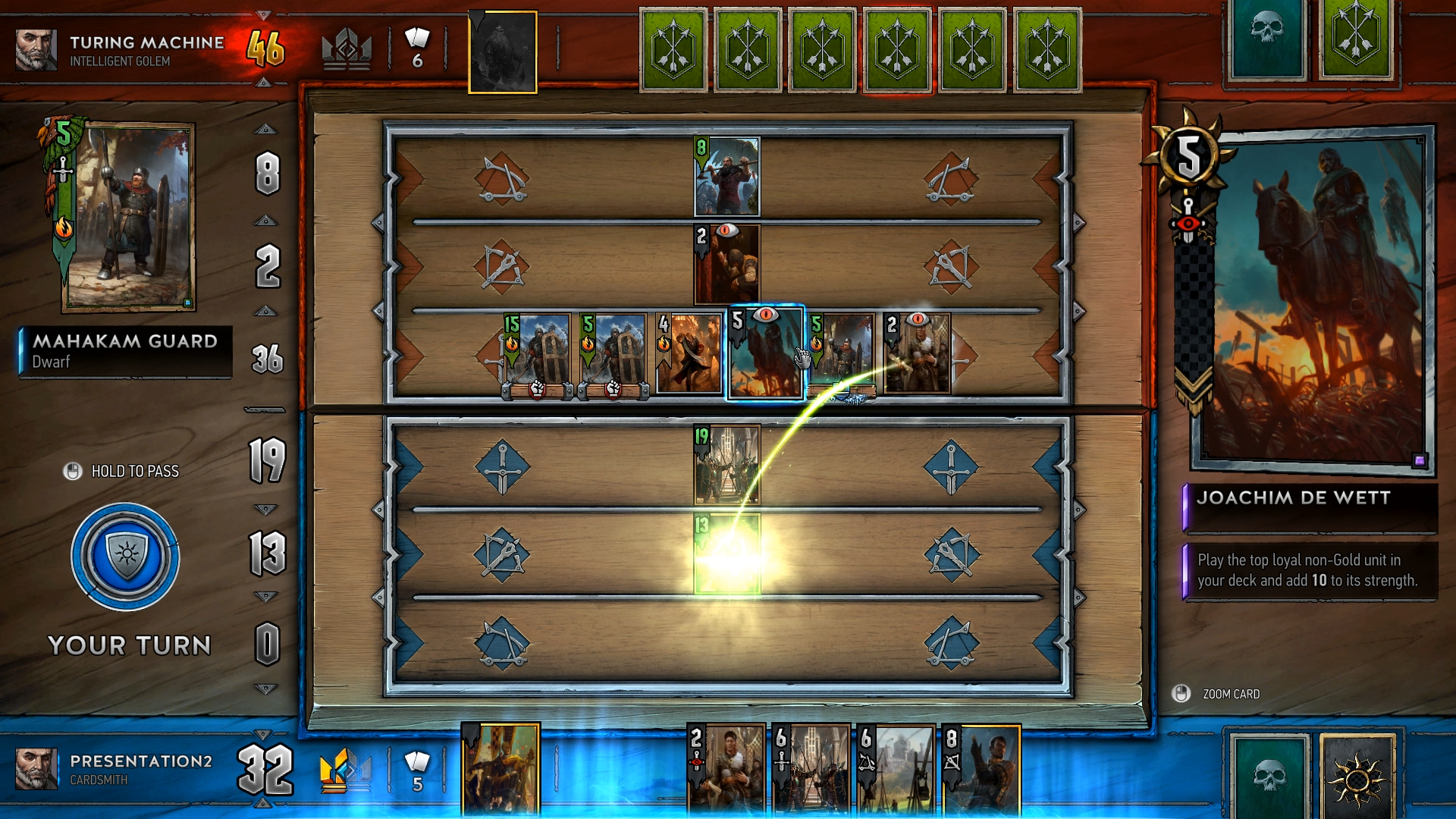The Nilfgaard faction shows Gwent has a life after The Witcher 3
The upcoming faction introduces new systems that show Gwent's potential as a standalone card game.

The Nilfgaardian faction was conspicuous by their absence when Gwent's closed beta went live last October. They were one of the four Gwent factions present in the original release of The Witcher 3, but standalone Gwent swapped them out for Skellige—a faction that wasn't part of Geralt's adventure until the Blood & Wine expansion.
Up to now, each of Gwent's factions has been inspired by their playstyle in The Witcher 3. The monsters spread quickly, drawing additional cards from your deck; Scoia'tael are guerilla fighters, chipping away at your opponent's attack score. This is the reason for holding back Nilfgaard: they were considered too similar to the Northern Realms to have their own identity. Rather than tweak them to add minor differences, Nilfgaard has been rebuilt from the ground up. The new deck, due to go live in the closed beta on February 6, adds entirely new systems in an effort to demonstrate Gwent's life beyond The Witcher 3.
It's a fun set of systems, and, based on a few hours of play, creates an interesting dynamic against the other factions. In The Witcher 3, Nilfgaard, like the Northern Realms, made good use of spies—disloyal cards that were played to your opponent's side of the board in exchange for drawing two cards from your deck into your hand. It was an incredibly powerful bonus, already nerfed for standalone Gwent, but the decision to play a card to your opponent's side remains an interesting one, and is one of the main systems of the new Nilfgaard deck.

Rather than spies specifically, though, Nilfgaard uses other disloyal cards with other perks. Fake Ciri, for instance, is played to your opponent's board, where she gains additional attack power each turn. When you opponent passes, she flips allegiance, returning to your board with all of the increased power she's gathered. Letting her gain strength unchecked can be dangerous if she's played to your side, but other new cards can nullify the effect. Take Letho, a gold card who banishes every other card on a row and absorbs their strength. Play it while Fake Ciri is still on your side, and he'll steal her power but destroy her and her treacherous trait.
Not every card is so elegant. The Ambassador card is a low-value disloyal unit that buffs the attack value of a random bronze card on your side, while the Emissary plays the top non-gold unit from your deck. And a special card, Treason, lets Nilfgaardian players coax back disloyal cards. In all, it's an interesting build—full of decisions about how many points you can afford to give your opponents while still building to an advantage.
Disloyalty is only one of Nilfgaard's main systems. The other is reconnaissance. Specific cards within the Nilfgaardian deck—including one of the faction leaders—can reveal cards from both hands. Vattier de Rideaux lets you reveal up to two cards from your own hand. For each card that you reveal, a card from your opponent's hand is also unveiled. The applications here are twofold. Firstly, you can choose which cards to show, divulging less (excuse the pun) revealing hands in the hope of uncovering important information on your opponent's plan.

More beneficially, though, other card traits can trigger whenever a card is revealed. Take the Mangonel, a potentially terrifying siege unit that removes two damage from a random non-gold opposing card whenever a card is revealed. Given that Vattier can create up to four reveals, and that multiple Mangonel's can be played, it's possible to do serious damage to any opponent unable to nullify the effect.
Keep up to date with the most important stories and the best deals, as picked by the PC Gamer team.
Resource control rounds out the Nilfgaard playbook, allowing players to look at upcoming cards from the deck, and shuffle them to the bottom. With Xarthisius, players can see the next two cards at the top of their opponent's deck, and choose to send one to the bottom—potentially scuppering their plan. In all, it's a an enjoyable deck, full of new systems that make sense within Gwent's existing styles. If anything, it makes some of the other hands—specifically Northern Realms—feel a bit vanilla. The Nilfgaard faction has a strong identity built specifically for the new systems of the standalone Gwent. A faction like Northern Realms, which retains its ties to the less ambitious minigame of The Witcher 3, feels broader and less focused.
Crucially, though, Nilfgaard proves that Gwent can be expanded in new, interesting ways, which will be vital if it's to have any longevity in the increasingly crowded card game market. Despite its origin as a diversion within a larger RPG, I'm hopeful that Gwent can make it on its own.

Phil has been writing for PC Gamer for nearly a decade, starting out as a freelance writer covering everything from free games to MMOs. He eventually joined full-time as a news writer, before moving to the magazine to review immersive sims, RPGs and Hitman games. Now he leads PC Gamer's UK team, but still sometimes finds the time to write about his ongoing obsessions with Destiny 2, GTA Online and Apex Legends. When he's not levelling up battle passes, he's checking out the latest tactics game or dipping back into Guild Wars 2. He's largely responsible for the whole Tub Geralt thing, but still isn't sorry.

